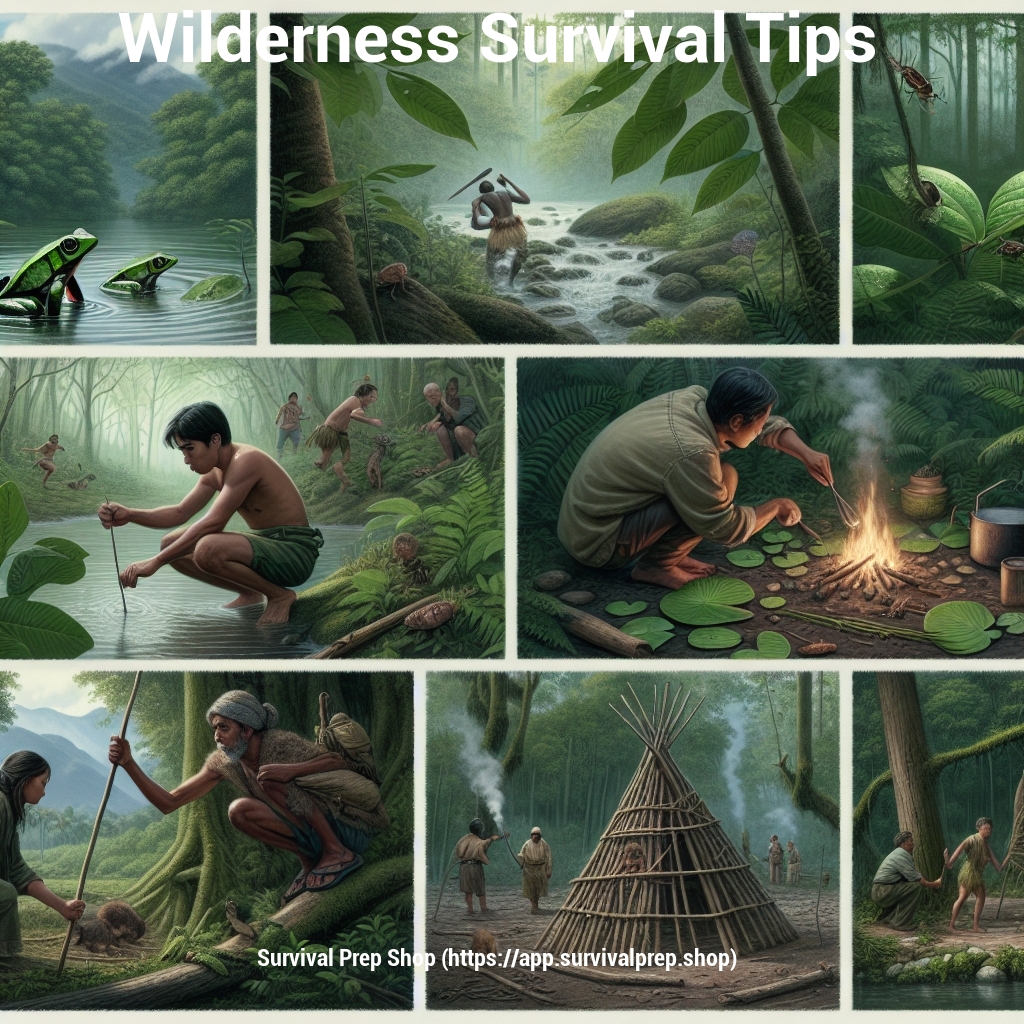
Hello everyone, and welcome to the Survival Prep Shop.
I’m delighted to join you in another invigorating discussion about all things survival. As we explore together, keep in mind that my advice comes from a place of personal practice and reflection.
Main eBook Title: How to Survive Out in the Wild
Chapter 1: How to Find Water
- Water should always be first priority in survival (can go much longer without food than you can without water, only a few days without water will kill someone)
- Following animals to water (certain creatures spend most of their time around water, such as frogs, so if you can follow their sounds you’ll be able to get close to water)
- Ensure that the water is clean (water found outdoors is often full of parasites and disease, water needs to be boiled/purified before drinking)
Chapter 2: Assembling a Shelter
- Material gathering (lots of sturdy, preferably dry sticks and large leaves if possible, some more flexible sticks or stems to be used as twine in a pinch)
- Area Clearing (don’t set up shelter in a dangerous area, IE around cactus, near an ant mound, or next to snake holes. Also clear out brush and rocks to make shelter somewhat comfortable)
- Consider elevation for safety (some areas have lots of ground-dwelling creatures that would disturb your sleep, so you may want to consider sleeping on an elevated surface rather than on the ground)
Chapter 3: Hunting Down Some Food
- There are options (you can choose to either go find edible plants, catch bugs or small animals, or try to capture/kill larger animals)
- Making tools will help (best tool available at short notice is a spear, which can easily be made with a long stick, knife, and rope)
- Patience is Key (trying to rush this process will result in you scaring off the animal you’re trying to get)
Chapter 4: How to Tell if Something is Safe to Eat
- Dangerous to eat unknown items (poison, serious illness, allergies, or even death)
- Coloration Makes a Difference (brightly colored bugs are often poisonous and should be avoided, while bugs that try to blend in with their environment are safe to eat usually)
- Rules of Eating Plants (common signs of dangerous plants, groups of three leaves, anything with white colored berries, things that smell of almonds which signals cyanide)
Chapter 5: Dealing With Potential Predators
- Many predators can be scared off (by making yourself look big and making noise, many predators will take you for something large and dangerous and not want to mess with you)
- Know your local animals (if you have brown bears around and you try to use tactics that work with black bears, you’ll very possibly end up dead. Know the differences in your local predator populations)
- Keeping Predators Away (things like fires will keep predators away from where you’re sleeping more often than not, as they’ve usually learned to fear fires)
Chapter 6: Hazards You May Encounter in the Wild
- Terrain (uneven and slippery surfaces can result in some hard falls if you’re not careful or don’t know what you’re doing)
- Flora and Fauna (plants and animals that can cause a wide range of discomforts and injuries, from poison ivy to mosquitos)
- Fatigue (very dangerous; by getting tired you’re less able to gather things you need like water and food, and eventually you can get too tired to do it at all, leading to dehydration or starvation)
Chapter 7: Learning to Ration Properly
- Eat Only What You Need (too much food and you’re wasting resources, too little food and you won’t get enough energy, etc)
- Drink plenty of water but don’t fill up on it (water is valuable, but also extremely necessary to living)
- Don’t be Wasteful (if you kill an animal, eat everything you can of it, otherwise you’re wasting time and energy)
Chapter 8: Signalling for Help if Needed
- Different methods of …
— Don’t forget to check out our YouTube channel — Click here —
